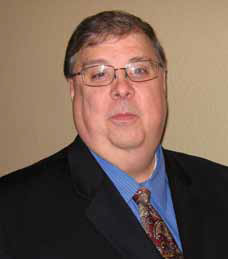Jim Gunner

Superintendent, Perkins Local School District, Sandusky, OH
Within 15 months of arriving at the Perkins Local School District, Superintendent Jim Gunner started a 1:1 program for 1,350 students in grades 6-12.
This achievement was especially important for Perkins Township, a blue-collar community that has suffered through the effects of the closing of several automotive suppliers in the area.
But getting laptops onto everyone’s desks was just a first step. Thanks to a $500,000 state grant, teachers focus on STEM-related, problem-based learning as a driving force at all grade levels. “Our students complete projects that our teachers connect to real life,” says Gunner. For their Flip This House unit, high school government students researched the local housing market and renovated a house. They worked with realtors and contractors to determine timelines and renovation costs, and they collaborated with government officials and inspectors to handle permits and approvals. The project culminated with the students marketing the house via a brochure or video and presenting their renovations and marketing strategy to the community members who assisted them.
For another project, teams of 8th-graders helped town officials design a new roller coaster for the Cedar Point amusement park. The students toured the park and worked with engineers to discuss the physics behind roller coasters. In addition to designing the coaster, the students worked with marketing experts to learn how to promote it. “The Cedar Fair executives were impressed with the physical models designed by the students as well as their creativity in marketing,” says Gunner.
A $7.28 million National Science Foundation grant allows 3rd-5th-grade students to participate in Citizens Science, a three-year, hands-on program about the scientific method of research using FOSS kits. Bowling Green University professors provide monthly teacher training, and teachers participate in professional learning communities. For a project investigating the recent worldwide decline of the Monarch butterfly, students learned how to collect butterflies, attach tracking devices, record the data, and send that information to the scientist running the Monarch butterfly project.
For the blended learning initiative, Perkins High School students can choose to attend class face-to-face at least twice a week while working on electronic lessons the rest of the week. Currently, more than 50% of the students have chosen to take a blended class.
Tools and ideas to transform education. Sign up below.
“Schools that are not actively exploring and engaging mobile technology as a way to open the greater world to their students are putting their students at a disadvantage in the world of the future,” says Gunner. “The students of today are truly 24-hour-a-day learners. We learned very quickly in our blended-learning pilot that our students would explore areas of interest in great depth when given the chance. We also discovered that technology could help us personalize our students’ education to keep them engaged and excited about learning. Technology can bring a completely different world of information and experiences to our children that would never have been available before the proliferation of mobile technology and the Internet.”
What He Uses
• Achieve 3000
• Dreambox Learning Math Series
• Evernote
• Gmail
• Google Docs
• iLife
• iPads
• iWorks
• MacBook Air
• MacBook Plus
• Read 180
• SMARTBoards
• TenMark
• Vernier probes and software
